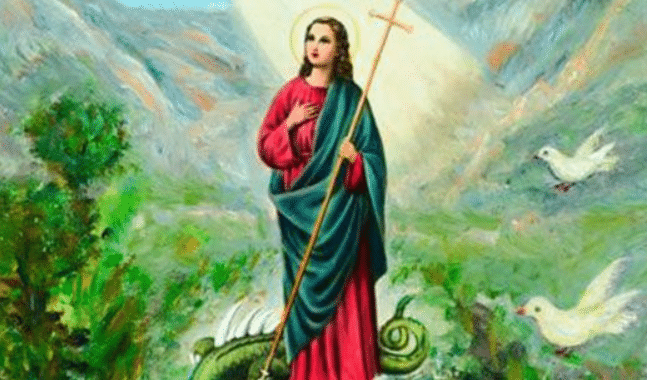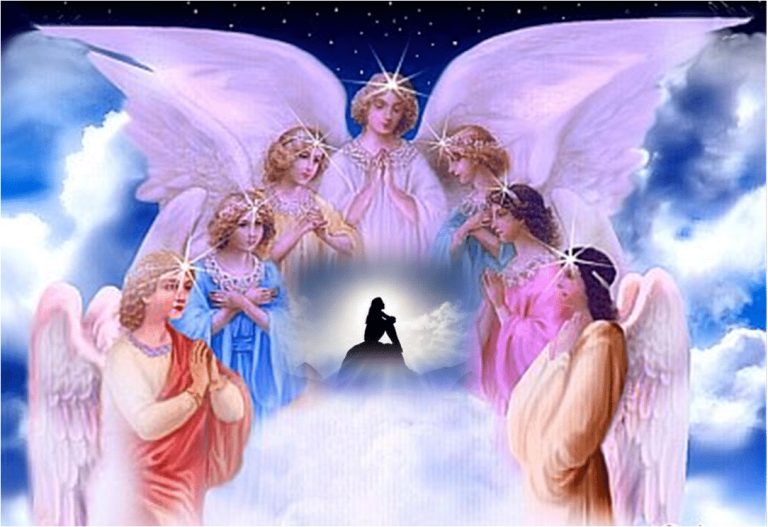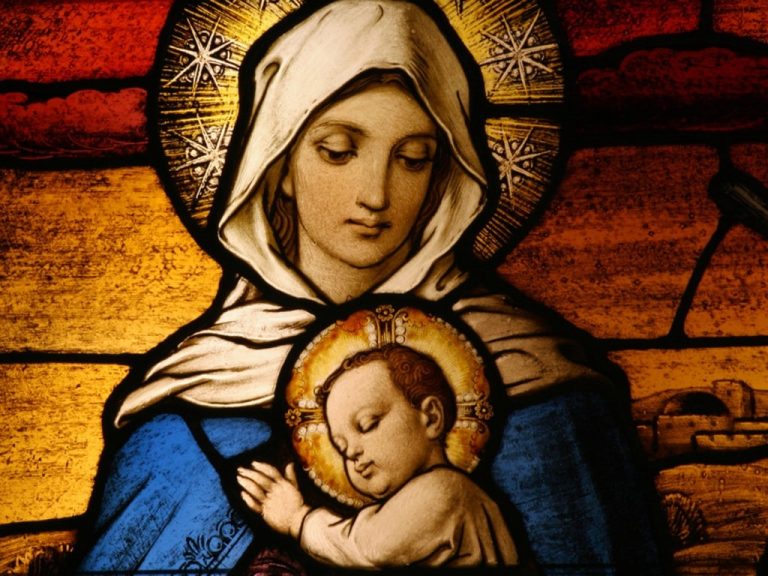Do you know what the Methodist church is? Find out here
What is?
Having knowledge about the different religious currents gives us the opportunity to be able to discern about the conception of God of each one of them, of life and of our spiritual behavior. This is because the foundations that support them can help us to forge our own opinion and know why or not to follow a certain religion.
In this article we will refer to the Methodist current for being one of those that has remained faithful to its principles and to those of the original Christian faith. Its faithful devotees exhibit their fidelity to their religion by the credibility that their spiritual leaders have reflected in their various actions.
It is inspired by the life and teachings of Anglican priest John Wesley, his brother Charles Wesley and George Whitefield being credited with being significant leaders in that movement.
History
Historically, Methodism originated in 18th-century Britain and, thanks to a robust campaign of missionary activity, managed to spread rapidly throughout the domains of the British Empire, reaching the United States and even other more remote territories.
This Methodist movement arose when a group of Christians, led by priest John Wesley, founder of the church, his younger brother Charles Wesley and George Whitefield, minister of the Church of England at the time, together with a large group of students, sought the renewal of the Church in England, based on the study of the Bible.
They were called Methodists for following a special method of analyzing the Holy Scriptures, in which a methodical approach to the Scriptures was made in order to establish the relationship and impact of these biblical precepts in the daily life of the believer.
These Christians and students held frequent meetings convening various sectors of the people, originally with a preference for workers, poor farmers and slaves. In them they carried out a detailed teaching of the Bible in order to seek the holiness of each one of the people.
Learn how to pray for sick newborn baby
John Wesley
Founder of this Christian movement that began in the mid-eighteenth century in the United Kingdom. In 1728, as a deacon, he became a member of the clergy of the Church of England.
In 1738 he experienced a religious awakening in London that convinced him that anyone could achieve salvation just by having faith in Jesus Christ and began his campaign. Later, in 1739, George Whitefield, already a famous preacher in Bristol, learned of his work and contacted him to join forces.
He made an “evangelizing” trip to the Thirteen English Colonies in America in 1735, which resulted in a resounding failure.
As a curious fact, on this trip a strong storm was generated that broke the mast of the ship in which they were traveling. While the English panicked and prayed for their salvation, the Moravians of the German Church, who practiced piety, song, and ardent faith in Jesus Christ, remained calm, serene, and sang their praises to God.
This experience made Wesley reflect on that attitude of inner strength that the Moravians had, which inspired him for his work.
From there it was that that experience called “Burning Heart” began to take shape in him, which was developed while he was in London at the headquarters of the Moravian Church.
At first Wesley was totally opposed to the proposal to preach outside the churches, in the streets, but then he was convinced of it after delivering his first sermon in the open air that same year, where he could see the enthusiastic reaction of the audience. This made him see that this was the most effective way to reach the masses.
Other than that few pulpits in the Anglican church approved of his evangelism.
From the beginning, it had great power to attract people, since the England of that time was open to this new doctrine, given that the Anglicans were no longer able to offer what people expected.
Wesley’s emphasis was based on personal religion that everyone could be accepted as children of God, which had a tremendous popular impact.
At a meeting in May 1739, Wesley and a large number of his followers formed the first Methodist congregation. Later, many other meetings were held and in the face of this vertiginous growth, it became necessary to found a more solid organization.
In 1784 he published a declaration that established the norms and rules that should serve as a guide for the new Methodist congregations.
Although the separation of the Anglican Church did not take place until after his death, these ordinations meant a definitive step towards the rupture.
There were many activities that Wesley undertook. For example:
- He was in charge of the intellectual, physical and economic welfare of the masses.
- He created the Holy Club together with his brother Charles.
- He wrote affordable historical and religious books for the poor, thereby fostering the habit of reading in general.
- He helped found medical dispensaries.
- He contributed to those who had debts and those who wanted to establish a business.
- He campaigned against slavery.
- He became interested in various social reform movements.
- He edited a monthly magazine.
- He translated works from Greek, Latin and Hebrew.
- He published with the title of “The Model of Christian”, the famous medieval prayer book of “The imitation of Christ”, attributed to the German Thomas de Kempis.
Methodist word meaning
This adjective “Methodist” began to be used to refer to the group of young students at the University of Oxford, among whom were John Wesley and his brother Charles, who organized the so-called “Holy Club” to carry out religious tasks and tasks. a very organized, disciplined and methodical way of Christian approach.
Later, when the actual activities of the church began, that name was appropriated to denominate this religious current that was forming derived from Anglicanism.
Among the purposes pursued in said club were:
- Spiritual growth through prayer, study, singing, reading the Bible.
- Thorough evaluation of the behavior and the obligations that each member had to carry out
- Help mission for the needy and homeless.
Also read about Prayer for my alcoholic husband
Particularly John Wesley was very methodical in each one of the activities that he carried out. Thus, for example, when he required a place for preaching, he himself would visit the field, verify that there was not much draught, that, in addition, it had a high place from which to preach the gospel, that people had conditions minimum to make their prayers.
If, on the other hand, the preaching was carried out in a closed place, he tried to make it a spacious, ventilated room, located in a good part of the town with easy access to the faithful, since he disliked hidden corners.
He was also meticulous about what he intended to accomplish for his followers in the Methodist congregations, for which he required:
- Care for souls and the cultivation of the life of God in the newly converted.
- Moral and spiritual condition of the community.
Logo
The United Methodist Church adopted in 1968 the symbol of the cross and the flame, which has its rights reserved since 1971 in the Department of Trademarks and Patents of the United States, with the number 917433.
This symbol shows a cross joined to a double flame, which relates the church to God through the second and third persons of the Trinity: Christ (the cross) and the Holy Spirit (the flame).
Some connoisseurs of the matter have pointed out that the flame also represents:
- Pentecost when the disciples had “tongues like fire” appearing on their heads, as expressed in Acts 2:3-4a which speaks of the tongues of fire being distributed, which rested on them and they were all filled with the Holy Spirit .
- The union with the duality of the flame, which means the union carried out in 1968 of the two denominations; namely: the Methodist Church and the Evangelical United Brethren when they formed the United Methodist Church.
In that year 1968, a Council of the new Church was held; that is, the United Methodist, in which a team was formed, headed by Edward J. Mikula, with the aim of creating an “official” brand for the new denomination arising from the merger.
The symbolic aspects to be included in this official brand were investigated. It was agreed that the design of said symbol should show some expression of heat to recall that flame that John Wesley felt in his burning heart, when on May 24, 1738 he had the experience that was relieved in Aldersgate Street, in England.
This is how the logo emerged marked with the empty cross in memory of the risen Christ and the flame, due to the strange heat in Wesley’s heart, that night in the eighteenth century in England.
Perhaps you may be interested in knowing about the prayer of faith
Characteristic
This church has many characteristics that it shares with the Anglican church from which it came. However, it includes some new ones that are its own, adjusted to its beliefs. So we have to:
- His theology is clearly Arminian, which is the Christian theological doctrine founded by the Dutchman James Arminius and which emerged in the early 17th century when the Calvinist dogma of double predestination was challenged.
- Its theological mission is:
- Call people to experience grace.
- Call to conversion to achieve salvation.
- It emphasizes that salvation is for everyone who accepts it.
- It consists of a simple liturgy, which has been classified as typical of the low Church, according to the Anglican tradition, as opposed to the high Church that was the Anglo-Catholic.
- They meet in congregations, spread out in different countries and cities.
- It is based on the Holy Scriptures and has as sacred places: Jerusalem and Nazareth (Israel) and Bethlehem (West Bank).
In their liturgical calendar they celebrate practically the same special dates and festivities that are celebrated by Christian churches, including the Catholic Church.
The number of Methodists in the world reaches the figure of around 90 million believers and the largest concentration of believers is recorded in the United States.
beliefs
Among the various beliefs that the Methodist doctrine imparts and that are followed and shared by its parishioners are:
- They believe in the Holy Trinity, in which God, Jesus Christ, his Son and Holy Spirit are conjugated, as the third form in which God appears to all human beings.
- They believe in the Bible, because through it everything that God wants for us on earth is reflected, and they know that it is the only way to be able to lead all of humanity to perfection, and what God wants for our lives.
- They believe in the human being and in the sacredness that each one of the people has, since we are made in the image and likeness of God and we have participation in his character and communion.
- They believe in the forgiveness of all sins, through repentance and acceptance of the mercy and forgiveness of Jesus Christ.
- They believe in Christian perfection, in the church as a group of believers, in which the Holy Spirit works.
- They believe in the kingdom of God, as Matthew points out in 6:33.
- They believe in divine judgment, God’s judgments are true and forgivable.
- They believe in eternal life, since they consider that death is just a door that leads us to a spiritual world.
- They deeply believe in repentance, since by doing so they are certain that they are born as a new person and with the opportunity to rebuild their lives without committing sins, praising God at all times, for which they must demonstrate true repentance.
- They believe that faith is the saving force, which is why God grants us this gift so that all people who are repentant seek it.
- They also believe in the doctrine of a new birth, which is the modification of human beings who seek God and as a gift He makes a work of love in hearts.
We can observe regarding these beliefs of the practitioners of the Methodist religion, that they do not differ much from those that are followed in the Christian religion. On the contrary, there are many similarities.
confession of faith
In 1962, the precept of the Confession of Faith was adopted as a common practice in the church and consists of 16 specific beliefs for it; namely:
- God: true, unique, living and holy. He is the Holy Trinity.
- Jesus Christ: true God and human being.
- Holy Spirit: He is one in essence with the Father and the Son. He persuades the world of sin and promotes justice and judgment.
- The Holy Bible: Old and New Testaments, which reveal the Word of God for our salvation
- The Church: The community of all true believers under the Lordship of Christ. It is one, holy, catholic and apostolic for the maintenance of worship, the edification of believers and the redemption of the world.
- The Sacraments: They are those ordered by Christ to profess the faith of Christians and the love of God. They are means of grace through which God works in the believer. Childhood is highlighted as a priority stage for baptism, which would benefit from the redeeming work of Christ.
- Sin and free will: The human being blessed and strengthened by the Holy Spirit, in his condition of freedom, can exercise his will for good.
- Reconciliation through Christ: Through Him, man was redeemed and reconciled to God.
- Justification and regeneration: Repentant sinners are justified because of Christ. Regeneration is the renewal of the righteousness of the human being through Christ by the power of the Holy Spirit.
- Good works: They are the necessary fruits of faith after regeneration, but they do not have the virtue of removing our sin or avoiding divine judgment. They arise from a true and living faith and through it they become evident.
- Sanctification and Christian perfection: It is the work of God’s grace through the Word and the Spirit, whereby those who have been born again are purified from sin in their thoughts and deeds. The Christian must be on his guard through the power of the Holy Spirit.
- Judgment and future state: All human beings are under the righteous judgment of Jesus Christ both now and on the day of judgment. They believe in the resurrection of the dead; the righteous to eternal life and sinners to eternal damnation.
- Public Worship: Divine worship is the duty and privilege of the human being who prostrates himself in adoration, humility and dedication. It is essential to church life, Christian fellowship, and spiritual growth.
- The day of the Lord: It is the memorial of the resurrection of Jesus and an emblem of our eternal rest. It is essential to the growth of the Church and the well-being of our society.
- The Christian and property: Private property must be used in a way that manifests Christian love and liberality for the support of the mission of the Church in the world. All property must be used responsibly for the good of humanity.
- The Civil Government: Receives its just powers from the sovereign God. They believe that governments should be based on the recognition of human rights under God and be accountable for them. War and bloodshed are contrary to the gospel and the spirit of Christ.
Doctrine
The essence of Methodist doctrine is very similar to Christian doctrine.
It is fundamentally based on the teachings of John Wesley, who was based on the full inspiration of the Bible and the rejection of rationalist commitment.
To do this, he created what was called Wesley’s quadrilateral with its four sides: experience, tradition, the Holy Scriptures and reason.
It raised the belief that the original sin of people separated from pure communion with God, so we must go to Him to free us from all our sins and our condemnation because of them.
The written sources on which the Methodist doctrine is based are:
- mainly the bible
- Various creeds of the Christian Church
- The Protestant Reformers of the 16th Century
- Articles of faith of the Methodist Episcopal Church
- The Confession of Faith of the Evangelical Church of the United Brethren in Christ
- Heidelberg Catechism of the Reformed Tradition
- Wesley’s sermons, treatises, and hymns.
Transformation Initiative
As part of the doctrine, Methodists offer an initiative to achieve transformation. In this regard, they have set themselves the mission of forming people, families and communities that are committed to living in love and justice according to the model bequeathed by Christ. Thus, this initiative can be specified:
- Caring for creation.
- Respecting diversity.
- Affirming human dignity.
- Deepening faith.
- Building peace.
- Empowering people for healthy coexistence.
- Promoting the full development of human potential.
sacraments
For the Methodist Church, the sacraments instituted by Christ represent signs or signs of the profession of faith of Christians and the love of God towards them. They are means of grace through which God works invisibly in the lives of the faithful, quickening, strengthening and confirming our faith in Him.
Now, the Methodist Church recognizes that the sacraments that Christ instituted in the gospel are:
- Baptism: Visible symbol of an internal and spiritual grace. It symbolizes regeneration or rebirth and means that one accepts Christ and his Church.
- Forms of baptism recognized by the Church:
- Sprinkling – The head is sprayed with water
- Affusion – Pouring water on the head
- Immersion – The person is immersed in the water.
- The Lord’s Supper: It is the Sacrament of our redemption through the death of Christ. Memorial of the death and resurrection of Jesus. Symbol of renewed love and loyalty to Christ. The cup is symbolic of the blood of our Lord. They do not believe in transubstantiation or transmutation; that is, that the bread and wine literally become the body and blood of Christ.
Learn what the prayer to Jesus for work is all about
development pattern
The Church offers a pattern for the development of grace designed by Wesley, which contemplates the following five steps:
- Of conscience of sin
- From repentance to justification
- to regeneration
- to sanctification
- to glorification.
In this pattern, three expressions of the same grace are considered. Let’s see:
- Preventive Grace:
- It is the one that God gives to all human beings until the moment they reach salvation.
- God gives what is required for a person to strive for salvation.
- This grace gives the human being the ability to understand the plan of salvation and respond to it affirmatively or negatively.
- Thank you justifying:
- It implies what God does for us through his Son.
- He calls the sinner to take an active part in justification.
- Accept or receive the forgiveness of sins in Christ -which is the essence of justification- for which it requires an internal change, a new birth, a new beginning, a radical change in all aspects.
- Sanctifying Grace: Assists the believer so that:
- get out of sin
- Keep believing in Christ
- Fight the sinful nature
- Reflect more and more the image of God
- Love the way God loves
- Take control of the sin that still remains in your life.
First Methodist Church
The United Methodist Church (IMU) is considered the first Methodist Church by virtue of its trajectory after 51 years of existence, the preponderance it has been gaining over time, as well as being the one with the largest number of faithful members among the protestant churches.
It belongs to the Methodist Protestant Christian denomination and its current is mostly evangelical. It was founded in 1968 by the union that, as already said, was made between the Methodist Church and the Evangelical United Brethren.
Among the main foundations of the IMU stands out the movement of Christian revival or religious awakening that took place in London at the time of John Wesley and Charles Wesley with respect to the Church of England.
From there, from that revival of the Wesleyan denomination, they took the essence of their theological orientation, which includes both liturgical and evangelical elements.
Knowledgeable experts on the subject have reported that the UMC in the United States has achieved the position of the second largest Protestant church and the third largest Christian denomination.
By 2007, there were an estimated 12 million members worldwide, eight of which are located in the United States and Canada and the rest spread across the continents of Europe, Africa, and Asia.
This church is a member of the World Council of Churches (WCC), which is the main international Christian ecumenical organization that brings together the main religious organizations of this faith in order to maintain a certain homogeneity in doctrine.
It was founded on August 23, 1948 by 147 churches, in the city of Amsterdam, even though its headquarters are in Geneva, Switzerland. In this council a total of 348 churches and affiliated denominations are counted, which report more than 600 million Christians in more than 120 countries.
Because the churches belonging to the WCC are located in different territories throughout the world, each one presents social, economic, cultural and political conditions of a very varied nature.
In view of this diversity of peoples, there are many cult practices from each region that exist in this council. In addition to that different forms of organization and government are observed.
The churches represented are mainly Anglican and Protestant. However, we must point out that many of the Eastern Orthodox Churches are registered, among which the Coptic, Armenian, Ethiopian, Eritrean, etc. can be mentioned.
There are also those of Assyrian origin and what is called the Old Catholic Church.
As an interesting fact, it should be noted that the Roman Catholic Church is not an affiliate member of the WCC, however, it maintains a close regular working relationship with this council.
The work carried out by the WCC in each country and region is very varied and as part of its work is the design, organization and implementation of Councils of Churches in each place, which will later become affiliated with the WCC. An example of these regional councils is what has been called the Latin American Council of Churches (CLAI).
The main objective of the WCC is to promote and encourage unity in the faith. Likewise, emphasize the common testimony as a result of the work of mission and evangelization. It seeks, then, to promote:
- Prayer as the ideal means to maintain the unity of Christians
- Brotherly relations between the churches
- The consolidation of spiritual relationships that serve as learning from each other.
You can also consult about the miraculous prayers to heal diseases
The work carried out so far, since its creation by the WCC, has always been supported and inspired by teamwork and the proactive participation of the churches, whose efforts are all directed towards the fight for:
- Keep the peace in their regions
- consolidate justice
- Stimulate with greater intensity solidarity with those in need.

Hello! Let me enthusiastically introduce myself as a dedicated blogger fueled by an intense passion for meticulously crafting insightful and well-researched blogs. My mission revolves around providing you, dear readers, with a veritable treasure trove of invaluable information.







